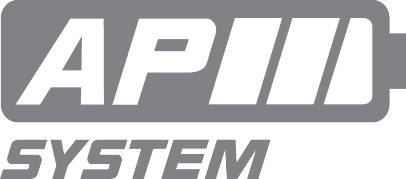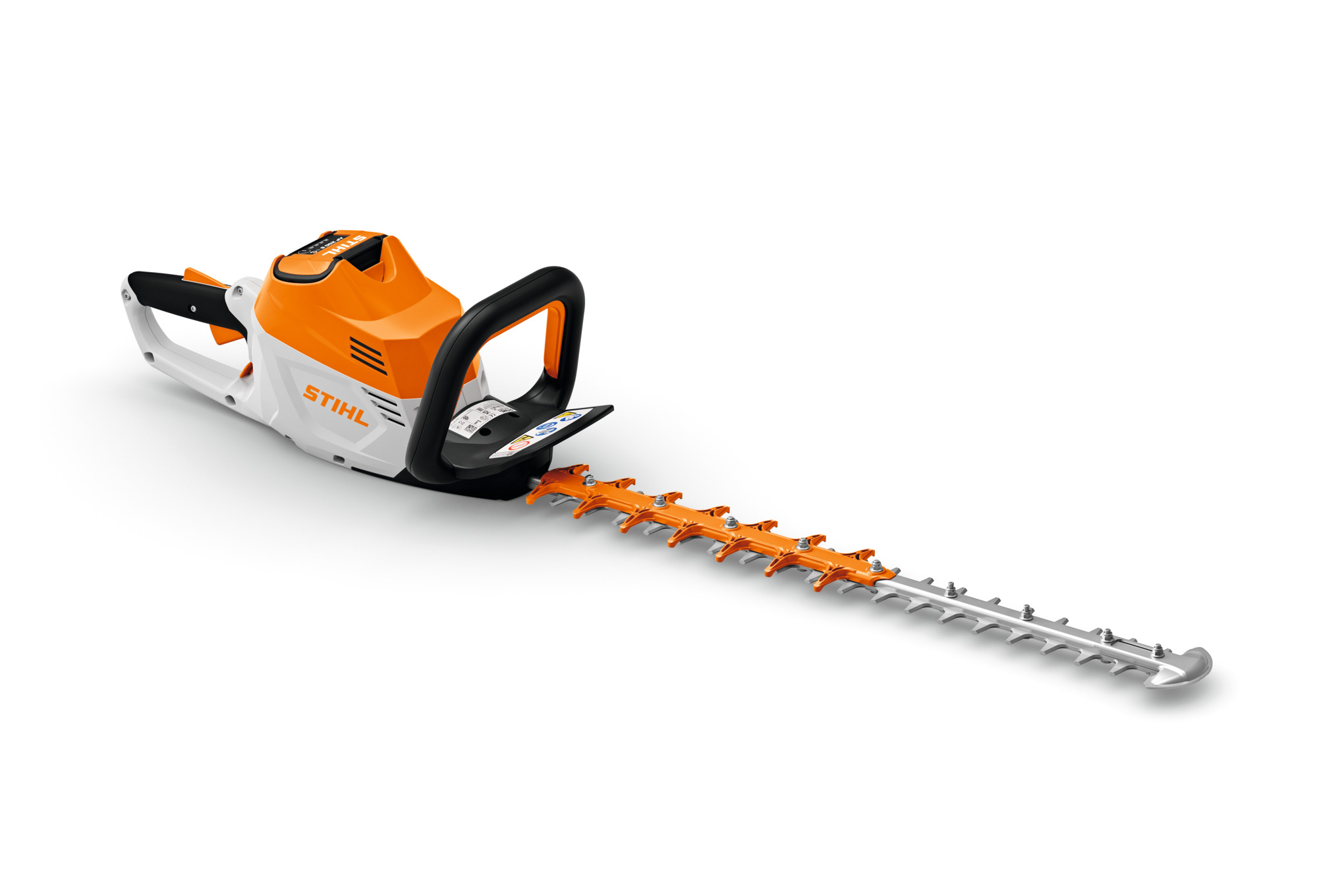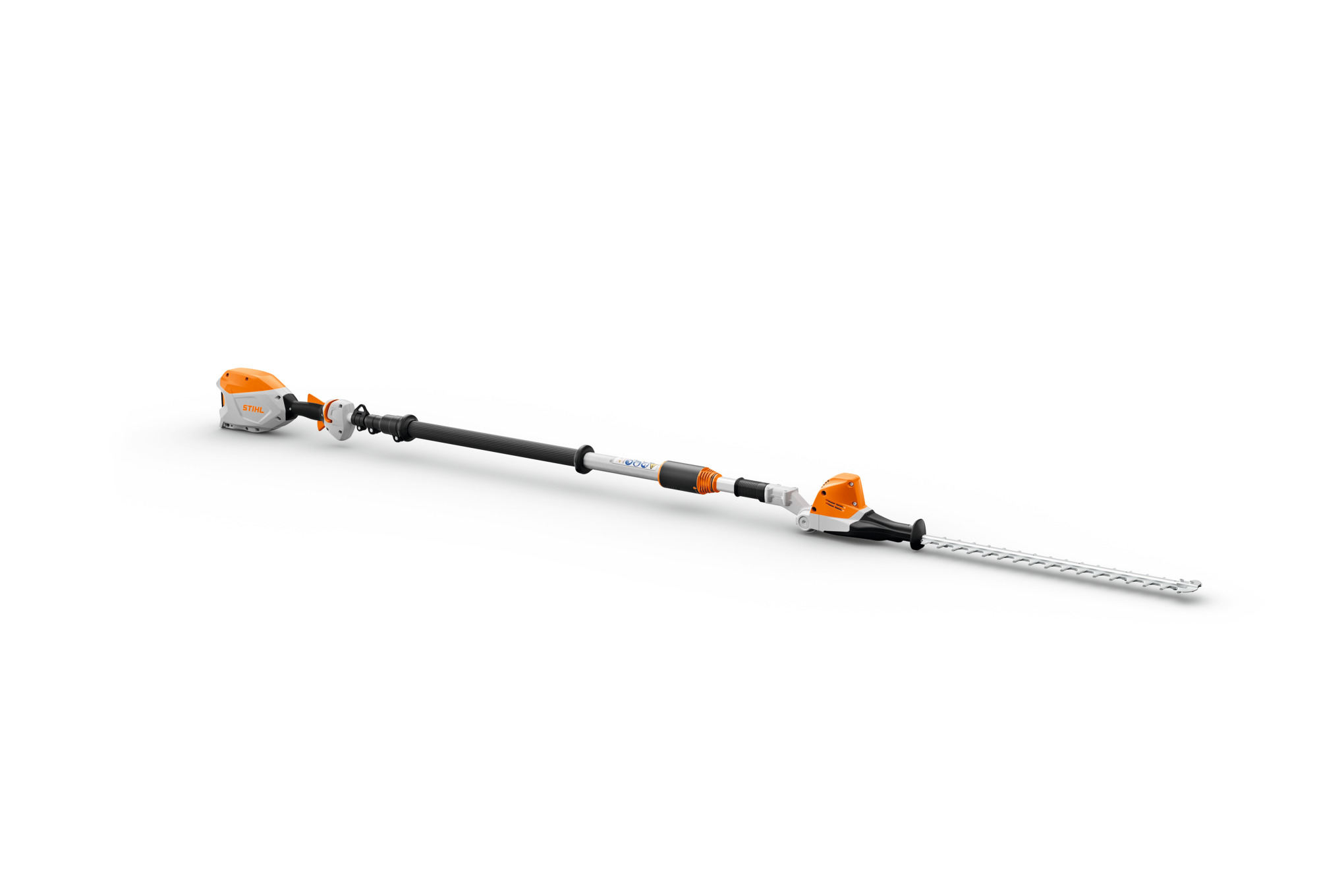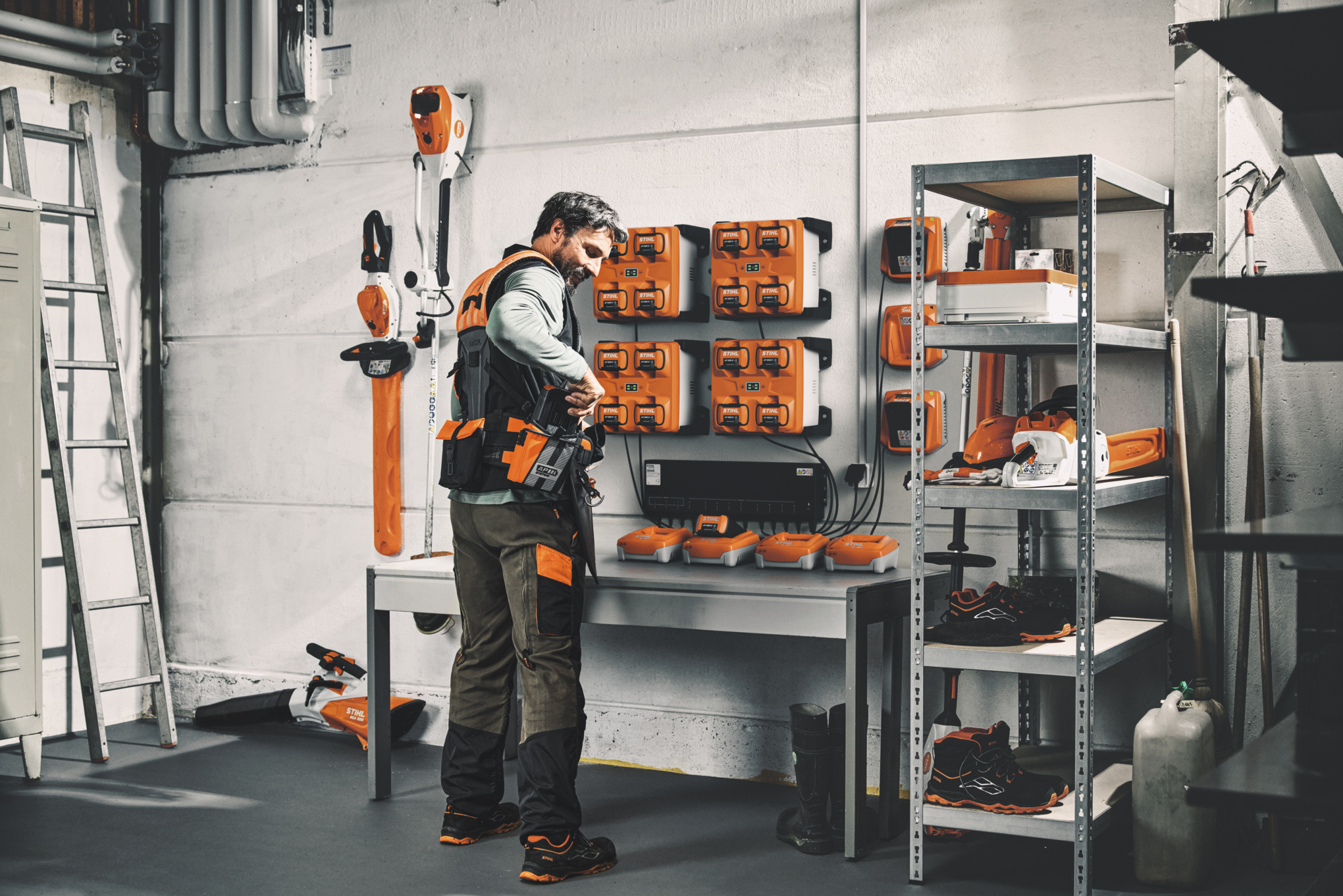Greened buildings: Proper planning, planting and maintenance
What does greening buildings look like in practice today, and what is the ideal technology for horticulture and landscaping professionals to use in caring for them? Find out here!
17.01.2025

Overview: Greened buildings
- Greening of buildings contributes to biodiversity and cooling
- Urban heat islands can be counteracted with urban greenery
- Strategic planning is important to ensure goals are achieved
- STIHL battery-powered tools are ideal when caring for plants on buildings
- Anticipate challenges and ideally deal with them in the planning phase
Cities become heat islands because in summer, they accumulate heat in densely built-up areas and sealed surfaces. Strategically planted urban greenery is one way of counteracting this effect.
Cities can be made greener by considering not only structural factors during urban planning, but also green spaces (dual internal development).
Greening of buildings is a good way to promote biodiversity and make a positive climate impact in densely populated urban areas.
One of the things to be aware of when maintaining greenery on and around buildings, is that work must be carried out quietly and efficiently to avoid disturbing people inside the building. It makes sense to choose lightweight equipment and tools for increased flexibility when working. Battery-powered solutions for grounds care have already proven themselves in practice.
Battery-powered products can help you in greening your buildings because they are flexible, emissions-free and quiet. These benefits quickly become apparent during work, especially in developed urban areas – as our practical video shows.
Practical video: Greened buildings
A visit to the greenest campus in the Netherlands: Aeres University of Applied Sciences in Almere. We meet architect Marc de Jager, who planned the greening of the building, and Gert Jansen who, with his teams, is responsible for the care and maintenance of the building’s greenery.
Urban heat islands: Urban green to combat heat
How can cities tackle climate change? The fact that heat accumulates in cities means that effective measures are needed to weaken heat islands. Greening of buildings and other urban planting can make a valuable contribution here.
An empirical study carried out by the Technical University of Munich over three years shows that, for cooling to be effective, around 40 percent of the urban space needs to consist of green areas.
A WHO study has found that city parks have an average cooling impact of 1 degree Celsius, which can have an effective radius of as much as 1 kilometre. But simply planting trees is not enough; though they are indispensable, they can also hinder air flow in the narrow “canyons” of streets in built-up areas. Urban greenery therefore needs to be planned strategically.
How a building becomes greened
Buildings are greened on a completely customised basis. As such, individual greenery concepts are an essential component of the dual internal development of cities.

The greenest campus in the Netherlands is in Almere.
The Aeres building in the Netherlands was not only designed with six trees and 2,000 plants on the roof terrace, but also features vertical greening: 12,000 plants decorate the exterior walls, promote biodiversity and give the building a distinctive character.
Modular system on the outer walls
A modular system was used to green the building within a few days. Planters can easily be clicked into the substructure. This meant that plants could be raised and grown in advance in a garden, and then attached to the exterior walls of the building in spring.

The plants grow in sheets of rock wool.
The type of planting is planned down to the smallest detail.
The plant varieties been strategically arranged on the outer wall in such a way that bees are attracted upwards – a “bee ladder” has been created.
All plants grow in plates filled with rock wool. Watering is done via a drip hose – independently controlled by an automatic system. Rainwater collected from the building’s water reservoirs flows to the greened building’s plants as required.

The solar panels provide shade for the plants.
Strategic planting also on the roof
The roof garden is not only home to trees and thousands of plants, but also a pergola with solar panels.
These have the function of converting sunlight into electrical energy, but also of providing shade.
This has an impact of the greened building design too, as sun-loving plants would not thrive in the shade of the solar panels; as such, the planting was adapted to the shady conditions.
Flexibility thanks to battery technology
Regular maintenance of greened buildings is essential. The professionals in the Netherlands choose battery-powered tools from the STIHL AP-System. Battery-powered hedge trimmers and battery-powered clearing saws are used to maintain the greened buildings, in just the same way as they are used for garden and landscape maintenance on solid ground.
The numerous battery advantages of these modern tools make work more efficient and pleasant. The reduced noise level and emissions-free operation contribute to a positive working environment, as well as causing less annoyance to people in the vicinity.
Another advantage of battery technology is the increased flexibility it offers. As the tools are lighter, professionals are better able to move freely and work in hard-to-reach places without relying on an external power source. This significantly increases efficiency and precision when maintaining greened buildings.
Gert Jansen is enthusiastic about the performance of the STIHL battery-powered fleet:
“We had our doubts at first, but the battery-powered tools turned out to be powerful enough for us to work with all day long.”
All in all, battery-powered tools present a future-proof solution for the maintenance of greened buildings, not only by making the work of professionals easier, but also by contributing to reduced noise and environmental pollution in urban areas.
Powerful and quiet: STIHL battery-powered tools
Urban greening: Challenges
For successful urban greening there has to be sustainable green space planning. Planners often encounter specific challenges here.
What’s needed is a holistic concept tailored to the development of the respective city, so that urban greening can have an optimal impact on climate and biodiversity in urban areas.

The greening of buildings presents many demands.
All technical requirements must be checked and fulfilled in advance for greening of a building’s exterior walls. Among other things, these relate to the tensile load and the anchoring of the planting system.
The greening of roofs can also present similar challenges. The roof ultimately has to be able to withstand the additional load from the building’s greenery, with other critical factors also coming into play, such as the wind upthrust load, fall protection and coordination with other elements such as superstructures, ventilation outlets and solar systems.
In addition, the winter months can become particularly challenging for building greenery if frost paralyses the irrigation system pipes. In the Aeres building, this has been dealt with by means of a system that automatically dries the pipes before frost hits.
These and other potential challenges in building greening should be considered at the planning stage, so that urban greening can deliver the greatest possible benefit for people, animals and the climate.

STIHL professional battery adviser
With the STIHL professional battery adviser, you can find out which battery-powered tools and charging solutions are best suited to your area of work and your company.










